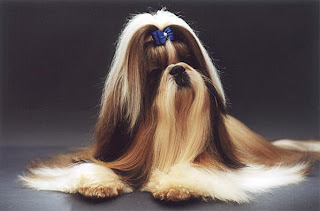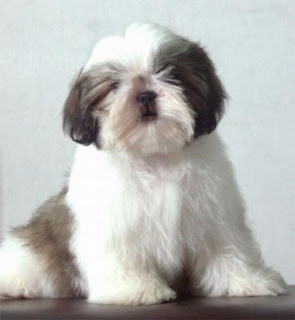Reviews
The Shih Tzu is a little, sturdy dog with a body that is slightly longer than it is big. The head is aaround and broad, and broad between the eyes. The rectangle muzzle is short, with an inch or less from the tip of the nose to the characterised stop. The nose is very wide, with well-open nostrils. Nose, lips and eye rims are liver on liver tinted canines, azure on blue canines and very dark on all other colors. The teeth rendezvous in a level or under gnaw. The large, round eyes are dark in color, but lighter on blue and liver canines. The large, pendant, low-set ears suspend down and are enclosed in abundant hair. The back is grade. The muscular legs are straight and well-boned. The high-set follow is conveyed over the back and is covered in abundant hair. Dewclaws are sometimes taken. The twice outer garment is dense and long, flowing down over the dog. The hair above the eyes is often joined in a topknot. There is a profuse beard and mustache and the hair on the muzzle is short. outer garment comes in all colors.
Size
Height: Up to 11 inches (28 cm)
Weight: 9 - 16 pounds (4 - 7 kg)
Health
Prone to fell stifle and spinal computer disc infection caused by a long back and short legs. furthermore ear infections, eye troubles and early tooth decrease. Tends to wheeze and snore and can have respiratory troubles. These dogs gain weight effortlessly and should not be overfed.
Living Conditions
The Shih Tzu is good for luxury suite life. These canines are equitably hardworking inside and will do okay without a yard. This type is perceptive to the heat.
Exercise
The Shih Tzu needs a every day walk. Play will take care of a lot of its workout desires, although, as with all breeds, play will not fulfill its primal gut feeling to walk. canines that do not get to proceed on every day walks are more expected to display demeanour troubles. They will also enjoy a good romp in a safe, open locality off lead, such as a large, fenced-in backyard. Do not overfeed this breed or it will rapidly become fat.
Life Expectancy
About 15 years or more
Other names: Chinese Lion Dog, Chrysanthemum Dog
Origin
Sixteenth years documents and paintings show dogs resembling the Shih Tzu. The Shih Tzu is said to have descended from traversing the Lhasa Apso or Tibetan mountain dog and Pekingese, in the town of Peking in the 17th years. The canines were favorites of the Chinese royals and were so valued that for years the Chinese refused to sell, trade, or give away any of the dogs. It was not until the 1930s that the first pair was imported to England, when it was discovered by English soldiers throughout World conflict II. The Shih Tzu was recognized in Britain in 1946. The AKC identified the type in 1969.
Group
Herding, AKC plaything categorised under the Non-Sporting canines category













